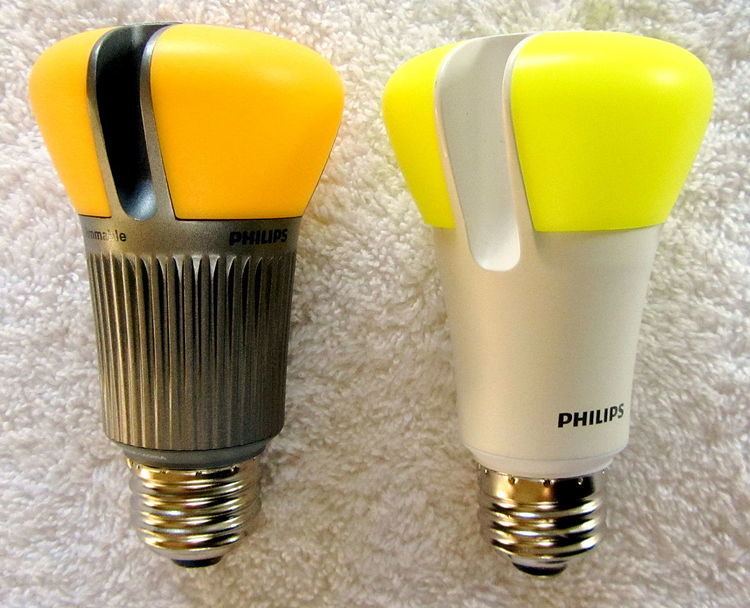 | ||
The color rendering index (CRI) of a light source is a quantitative measure of its ability to reproduce the colors of various objects faithfully in comparison with an ideal or natural light source. In general terms, CRI is a measure of a light source's ability to show object colors "realistically" or "naturally" compared to a familiar reference source, either incandescent light or daylight. It is significant because it has been the most difficult metric for incandescent replacement light bulbs to match (while maintaining high efficiency) and therefore the most frequently ignored (the CRI spec value appears on only a very small percentage of LED product packaging). For that reason, LED light bulbs with a high CRI can be worthy replacements for incandescent light bulbs. Most LED lights do not have a CRI above 90. For example, the top bulbs listed in the 2016 Consumer Review only have a CRI of 80.
However, CRI is a poor indicator of the perception of light produced by LEDs, and scores as low as 25 can produce vivid-appearing white light, while high-scoring sources can still be very poor at rendering reds, including skin tones. This is because CRI is not an indication of light colour, but a measurement of a light source's ability to accurately illuminate different colors compared to a radiating black body light source of the same light color, such as the sun or an incandescent light. The "warmer" light colors, such as a 2700K incandescent bulb or a 1700K candle light are more easily reproduced than more neutral white lights, such as 4800K direct sunlight, and thus usually have higher CRI ratings in alternative light sources such as CFL and LED bulbs; "warmer" light (more red) naturally renders colors less accurately. Think of how the world looks at sunset (2000K) compared to high noon (5600K).
In 2008, the US Department of Energy created the L Prize to find an incandescent light bulb replacement that met efficiency metrics and had a CRI above 90.
CRI is calculated from the differences in the chromaticities of eight CIE standard color samples (CIE 1995) when illuminated by a light source and by a reference illuminant of the same correlated color temperature (CCT), commonly measured in Kelvins, indicating the light color produced by a radiating black body at a certain temperature; the smaller the average difference in chromaticities, the higher the CRI. A CRI of 100 represents the maximum value. Lower CRI values indicate that some colors may appear unnatural when illuminated by the lamp. Incandescent lamps have a CRI above 95. Cool white fluorescent lamps have a CRI of 62, however fluorescent lamps containing rare-earth phosphors are available with CRI values of 80 and above.
For CCTs less than 5000 K, the reference illuminants used in the CRI calculation procedure are the SPDs of blackbody radiators; for CCTs above 5000 K, imaginary SPDs calculated from a mathematical model of daylight are used. These reference sources were selected to approximate incandescent lamps and daylight, respectively.
